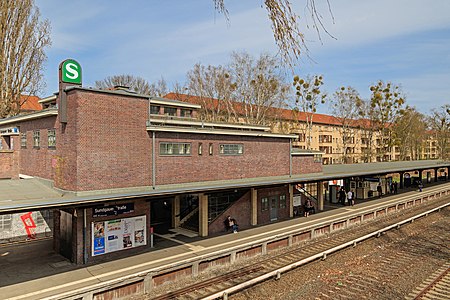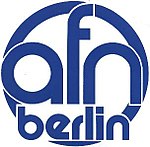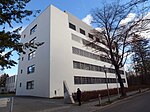Berlin Sundgauer Straße station
Berlin S-Bahn stationsBerlin S-Bahn stubsBerlin railway station stubsBuildings and structures in Steglitz-ZehlendorfPages with no open date in Infobox station ... and 2 more
Railway stations in BerlinRailway stations in Germany opened in 1934

Berlin Sundgauer Straße (in German Bahnhof Berlin Sundgauer Straße) is a railway station in the Zehlendorf locality of Berlin, Germany, served by the Berlin S-Bahn and a local bus line. The station opened on July 1, 1934, in the course of electrifying the Wannseebahn suburban railway line, originally laid in 1891. The entrance building is a protected landmark. Both the station and the adjacent street are named after the Sundgau region in France.
Excerpt from the Wikipedia article Berlin Sundgauer Straße station (License: CC BY-SA 3.0, Authors, Images).Berlin Sundgauer Straße station
Kleinaustraße, Berlin Zehlendorf
Geographical coordinates (GPS) Address Nearby Places Show on map
Geographical coordinates (GPS)
| Latitude | Longitude |
|---|---|
| N 52.4364 ° | E 13.2739 ° |
Address
S Sundgauer Straße
Kleinaustraße
14169 Berlin, Zehlendorf
Germany
Open on Google Maps







